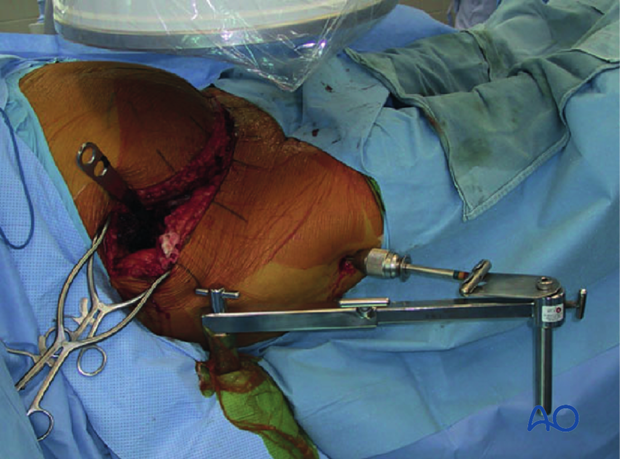Supine position
1. General consideration
The ilioinguinal and the modified Stoppa approaches are performed with the patient in supine position.
2. Setup and essential equipment
There will be local variation depending on resource and surgeon’s preference, but the following should be used:
- Radiolucent table
- Image intensifier with experienced radiographer
- Traction
Note
A urinary catheter should always be inserted prior to surgery.
3. Supine position: flat-top or fracture table
Place the patient supine on either a radiolucent flat-top operating table or fracture table with support spars that allow hip mobility.
In either case, significant hip flexion is required to allow sufficient exposure of the acetabular surface for both the ilioinguinal or the modified Stoppa exposures.
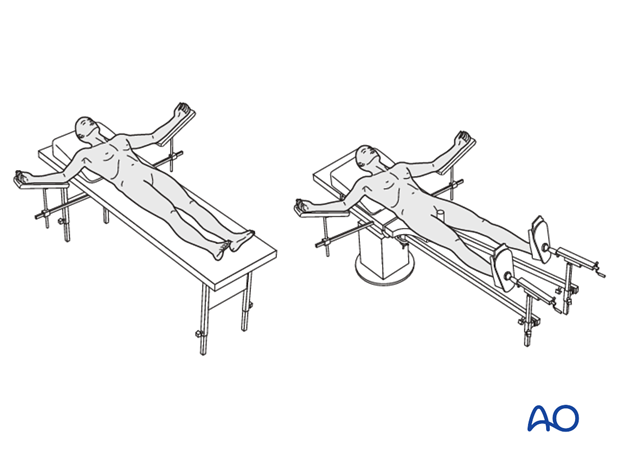
4. Patient positioning on a flat-top radiolucent table
The patient is positioned laterally on the table close to the edge. This allows sufficient posterior iliac access beyond the gluteus medius pillar.
The upper extremities can be positioned to the side, or the ipsilateral arm can be positioned across the chest. A pneumatic compression device can be placed on the uninvolved lower extremity.
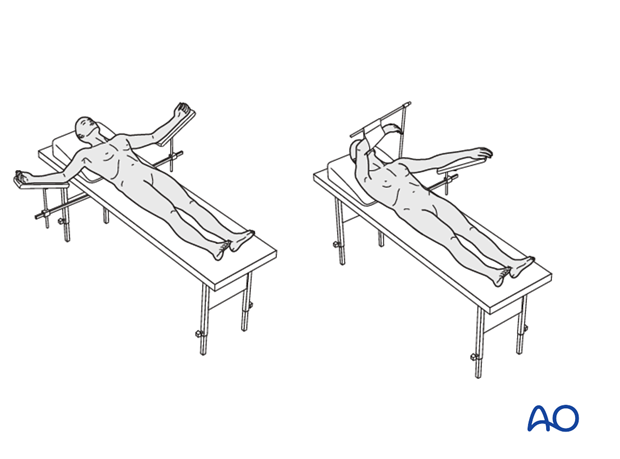
5. Draping
The lower abdomen and ipsilateral lower extremity are draped free into the surgical field. This allows full hip mobility and application of traction during surgery.
The hip will require flexion of 20-40° during exposure of the pelvis. Flexion of the hip relaxes the iliopsoas. A sterile bump or limb positioning triangle is placed under the knee to accomplish this flexion.
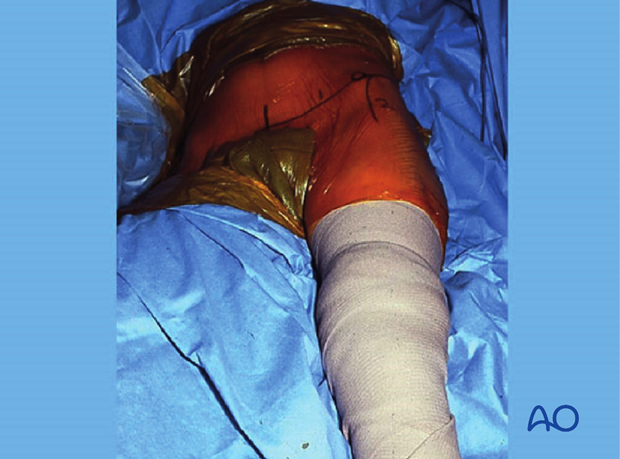
6. Lateral traction
Lateral traction may be applied manually via a Schanz screw placed through the greater trochanter.
Alternatively, a lateral traction attachment may be secured to the operating room table.
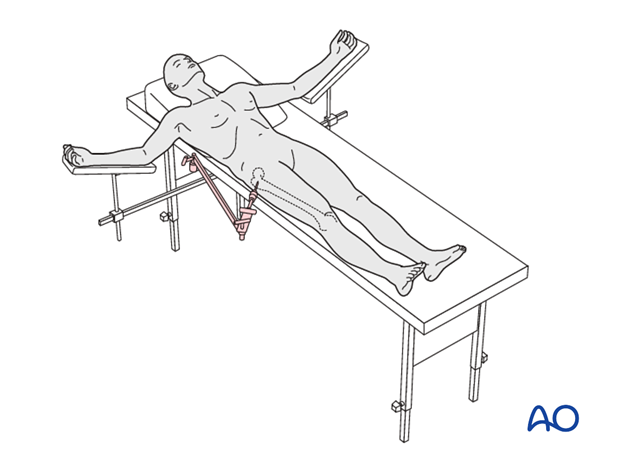
7. Patient positioning on a fracture table
The patient can alternatively be positioned supine on a fracture table with support spars that allow hip mobility.
The fracture table chosen must allow imaging capability.
The upper extremities can be positioned at the side, or the ipsilateral arm can be positioned across the chest. A pneumatic compression device can be placed on the uninvolved lower extremity.
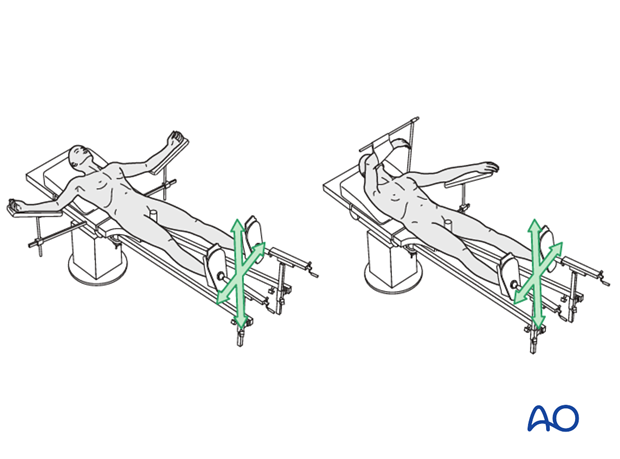
8. Hip flexion
Hip flexion is required to relax the iliopsoas and allow access to the iliac fossa and deep pelvis. This is accomplished on the fracture table by elevating the spar and the application of a calf positioning bump. A combination of these maneuvers will allow hip flexion of 20-30°.
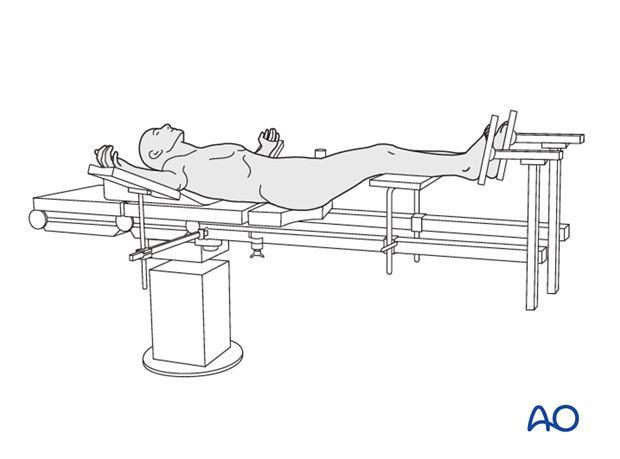
A lateral traction attachment is available for some fracture tables. This attachment allows the femoral head to be reduced to an anatomic position and provide a stable template around which the articular fragments can be reduced.
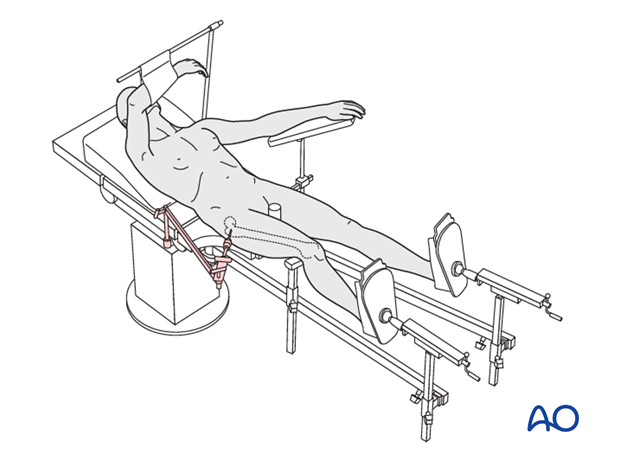
Lateral traction attachment
